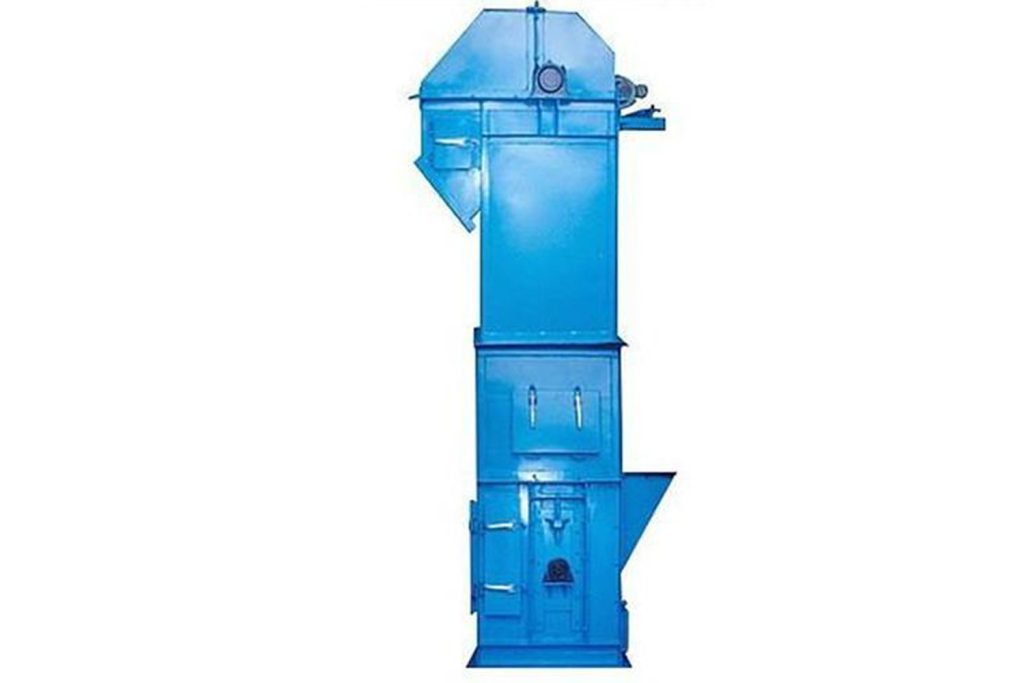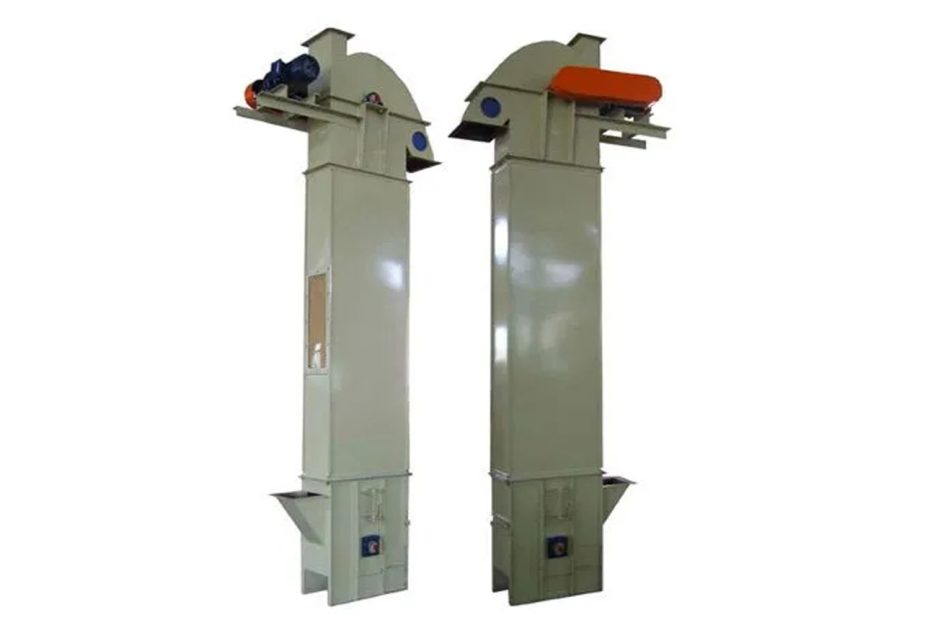Bucket elevator is a common material vertical conveying equipment, which is mainly used to transport materials from low to high or from above to below.
Bucket elevators are mainly suitable for conveying bulky, large-capacity and heavy materials, and are widely used in building materials, chemicals, grains, mining and other industries.
The working process of the bucket elevator can be divided into three stages: loading, lifting and unloading. These three processes are closely linked to form a complete working process of the bucket elevator.
Any problem in any process will affect the normal operation of the hoist, which may cause backflow and reduce production, or cause blockage and stop the machine if it is serious.
Reasons for the hopper to spill material during the lifting process of the bucket elevator
When the hopper has finished filling and bypasses the horizontal centerline of the bottom wheel, it starts to move in a straight line at a constant speed to lift the material upwards. During the lifting process, try to avoid the material in the hopper from being thrown out. Spreading materials during lifting not only reduces the productivity of the bucket elevator, but also wastes power and causes material breakage.
reason1#:The gravity of the hopper and the material in the hopper makes the hopper tilt forward
The hopper is in a cantilever state on the traction member. The gravity moment of the hopper tries to make the hopper tilt forward, while the reverse moment generated by the tension of the traction member resists this forward tilt. The forward tilt of the hopper will cause some materials in the bucket to slide to the edge of the bucket and spill out.
In actual work, the operator often judges the tension degree of the traction member based on experience, that is, presses the traction member by hand, and judges its tightness by feeling, neither too loose nor too tight. If it is too loose, the angle of forward inclination of the hopper will be large, causing backflow, and the belt traction member will also slip; Cause the fracture of the traction member.
reason 2#:Unreasonable design of bucket elevator hopper
The design of the bucket elevator hopper has a crucial influence on the effect of material transportation. If the design of the hopper is unreasonable, such as too small or too large, it will lead to poor flow or excessive density of the material during the lifting process, which will affect the normal operation of the bucket elevator.
At this time, the hopper will be blocked or sprinkled. Therefore, when designing a bucket elevator, the size and structure of the hopper should be reasonably designed according to the nature of the material and production requirements to ensure that the hopper can operate well.
reason 3#:Bucket elevator drive chain loose
The slack of the bucket elevator drive chain is also one of the reasons for the hopper to spill. When the slack of the transmission chain is too large, the operation of the bucket elevator will be unstable, and the hopper will shake and swing during the lifting process.
In this case, the material will slip or fall out of the hopper, causing the phenomenon of spilling. The way to solve this problem is to check, fasten and maintain the transmission chain in time to ensure the tightness and stability of the transmission chain.
reason 4#:Unreasonable bucket balance and quantity
In the working process of bucket elevator, the balance and quantity of buckets are also important factors. If the bucket balance is improper or the number is unreasonable, it will cause the bucket elevator to work unstable, and the material will swing or turn over when it is lifted, resulting in material spillage.
The number, size and distribution of the buckets should be reasonably designed and distributed according to the nature and working status of the materials. When setting the number of buckets, ensure that the number of buckets is sufficient to avoid the overweight of the hopper due to the small number of buckets, which will cause the buckets to overturn or spread materials during the lifting process.

reason 5#:The hopper is subjected to vibration
The vibration of the hopper is one of the reasons for spreading materials. The longer the vibration time and the greater the vibration intensity, the more materials will be thrown.
The reason for the vibration of the hopper comes from the vibration of the components of the elevator itself and the vibration of the working environment. The vibration of the hoist itself mainly comes from the unbalance of the rotating parts on the machine.
In addition, the interface of the belt traction components is uneven, the pitch of the chain traction components is too large, the chain speed is too high, etc., which will cause the hoist to vibrate to varying degrees. , should be resolved in a timely manner.
reason 6#:Bucket elevator control system failure
The control system of the bucket elevator is the core of the whole bucket elevator. If there is a failure, it will affect the operation of the whole bucket elevator.
If there is a problem with the control system, it may lead to unstable operation of the bucket elevator, which may cause the hopper to spill material during the lifting process.
In order to ensure the normal operation of the control system, it is necessary to carry out regular inspection and maintenance, and troubleshoot in time.
In summary
There are many reasons for the bucket elevator to scatter material during the lifting process, which may involve the design of the hopper, the slack of the transmission chain, the unreasonable balance and quantity of the bucket, and the failure of the control system.
For this problem, it is necessary to carefully observe and analyze during the production process to find out the root of the problem and take appropriate measures to solve it according to the specific situation.
During the lifting stage of the bucket elevator, the bucket will move forward along the route of the elevator and be lifted by the drive of the transmission sprocket until it reaches the receiving position. Through the mutual cooperation of the three stages of loading, lifting and unloading, the bucket elevator can quickly and efficiently complete the task of material transportation.
